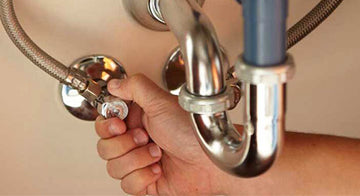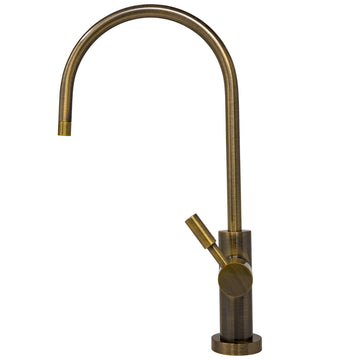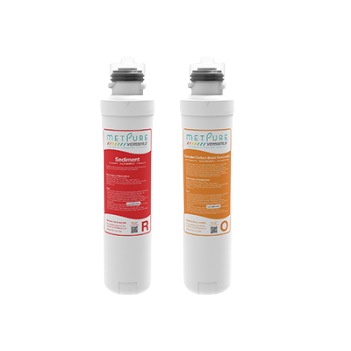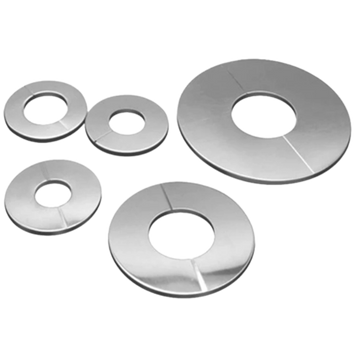Do you want to put in or replace the water supply in your kitchen or bathroom? Remember to give the parts frequently disregarded, like the tap supply lines, a little extra care because these lines are crucial to maintaining an uninterrupted and dependable water supply to your tap. The various features of faucet supply lines, such as connector sizes, line lengths, sink supply line sizes, and standard faucet supply line sizes, will all be covered in this article.
Factors to be Considered while installing Faucet Supply
1. Faucet Connector Sizes
The connector size ought to be carefully considered when choosing tap supply lines. The part responsible, which will be fixated on the shut-off valve and tap, is called the connector. 3/8-inch and ½-inch compression sizes are included in the standard tap connector size. The length of the connector should always be carefully thought out when settling on tap supply lines because it is also a significant step in choosing the faucet.
Because they offer a trustworthy and secure against leakage connection, the 3/8-inch compression connector is the most commonly utilized of the two standard sizes in many facets. In any case, larger, more durable systems frequently use ½-inch compression connectors.
You must carefully examine the minimum requirements of both your tap and the shut-off valve to ensure they are compatible. In addition, find the most appropriate size for your installation by checking the dimensions of the existing connectors or contacting the faucet’s instruction manual.

2. Faucet Supply Line Lengths
The overall length of the tap supply lines ought to be another area of concern after figuring out the most suitable connector size. These lines are available in various lengths to accommodate a range of distances between the tap and the shut-off valve. The most popular sizes are 12, 16, 20, and 24 inches.
You must ensure the supply lines you decide upon are both too short that they impose too much pressure on the connections and too long for them to reach without excessive slack. When in doubt, it’s usually better to use supply lines that are slightly longer and easily coil under the sink.

3. Sink Supply Line Size
The size of the bathroom sink supply line and the diameter of the pipe that transfers the water from the valve that shuts off the water to the tap will be the third factor you must consider. It is also significant in choosing the most appropriate faucet according to your wants and needs. The ½-inch supply line is the standard size for sinks. However, it would be best to double-check this measurement as some older houses or specifically designed installations could have varying dimensions.
When replacing or upgrading the bathroom sink supply lines, it is an effective decision to follow through with the standard ½-inch size, regardless of whether your particular setup may or may not require a different diameter. As a result, compatibility with a substantial number of faucets will be made certain, and coming across replacement parts in the not-so-distant future will become considerably simpler; hence, it is important to consider this factor as well.
4. Standard Faucet Supply Line Size
As pointed out, the typical tap supply connection size is 3/8 or ½ inch. It’s very significant to understand that industry standards can change and that certain faucets could have particular specifications that work in specific places only. The manufacturer's specifications and instructions should be consistently followed to determine the most suitable supply line size for your particular tap model.
Determining the standard size helps to guarantee that you can choose from an extensive selection of options further down the road when it comes to modifying or switching out the tap’s components. In addition, it simplifies tracking down compatible supply lines on the internet or at a local store around the neighborhood.
Important Factors to Consider for Your Bathroom or Kitchen

Image Source Engineering Guide
In addition to the factors mentioned above, there are a few other things to remember when choosing faucet supply lines for your bathroom or kitchen.
- The material of the supply lines can affect their durability and longevity. Most faucet supply lines are made of braided stainless steel or nylon, which are both strong and flexible. However, some supply lines may have less durable materials that can crack or wear out over time. Choosing high-quality materials is important to ensure that your supply lines last as long as possible.
- The type of shut-off valve can also impact the performance of your faucet supply lines. There are two main types of shut-off valves: compression and ball valves. Compression valves are the most common type and are easy to install. Ball valves are more durable and reliable, but they can be more difficult to install and may require a professional plumber.

Image source: Engineering Guide
- Finally, if you are concerned about the quality of your water, you may want to consider adding a water filtration system to your faucet supply lines. This can help remove impurities and improve the taste of your drinking water. Many types of water filtration systems are available, so it's important to do your research and choose the one that best meets your needs.
Conclusion
When deciding on faucet supply lines for the kitchen or bathroom in your home, you must remember to consider several factors, including standard sizes, connector sizes, lengths, and sink supply line sizes. Leaks and other plumbing issues are much less likely to occur when these components are accurately measured and verified thoroughly. This is to make these changes seamless and give us a trouble-free installation.
Always refer to the tap manufacturer’s specifications before buying supply lines, and precisely measure the distance between the tap and the shut-off valve. To ensure an adequately secure and leak-free connection, double-check that the connector sizes match those of the shut-off valve and the tap.
Purchasing premium tap supply lines is amongst the simplest but crucial components of maintaining your home’s plumbing system operating well. You can extend the life of your plumbing fixtures and have an uninterrupted water supply for your faucets by paying attention to these insignificant details. Investing in top-of-the-line tap supply lines is one of the easiest yet most important steps to maintain your home’s plumbing system functioning properly.














